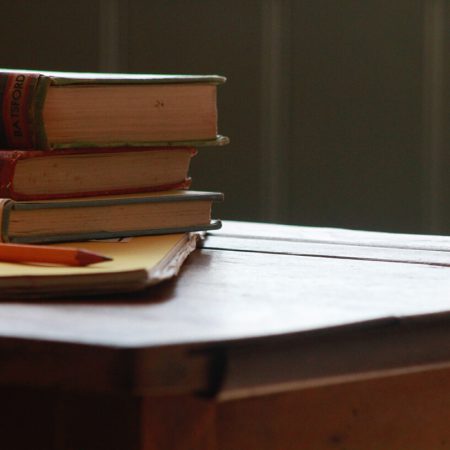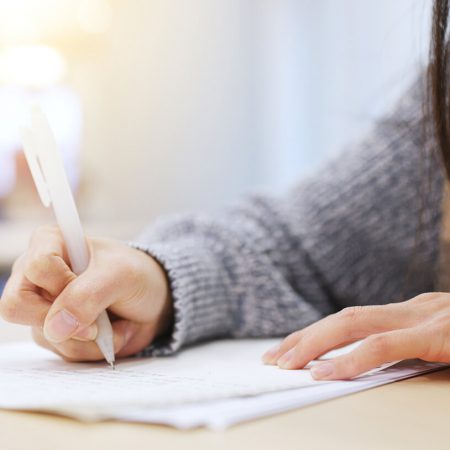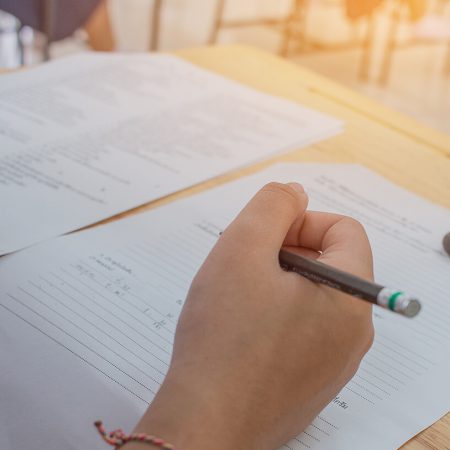How did I study Japanese? Part 1 of 5

The Japanese language remains one of the most popular Asian languages that foreigners love to learn. From career opportunities that foreigners have in Japan to the global popularity of anime and manga, it’s no surprise that people want to utilize this language for themselves.
If you’re enthusiastic about learning Japanese, it might help if you had some insight from someone who learned the language from scratch. In this article, I will walk you through how I studied Japanese, from learning how to read, as well as finding methods that helped me learn faster!
Table of contents
How I Studied Japanese: Part 1 of 5 – Learning to Read

Photo by Fabian Reus on Flickr
You might have your reasons for learning an entirely new language. Perhaps you’re migrating to Japan for business, so you want to learn the language for survival. Or you might be a fan of Japanese culture and media, so it makes sense to want to learn the language. I had to learn Japanese for a mandatory college class. Whatever reason you may have, you must prepare your mind for learning.
Learning Japanese as a second language requires a lot of memorization. After all, it has its own rules with a completely different alphabet. It’s understandably intimidating, but rest easy! If it’s any consolation, English is my second language. English can be just as complicated but, dare I say, Japanese is much more straightforward.
If you’re eager to learn this fascinating new language, you would commit yourself to do so in a way that works for you. In my case, I approached the Japanese language like any other school subject. I just studied and internalized as much information as I could as I prepared for tests and exams. Here’s a closer look into my learning process:
I frequently wrote Japanese characters

The first assignment on my first day of learning Japanese was to memorize the primary Japanese characters. This was an inevitable step in learning, and there was no way to sugarcoat the process. Since this was the foundation of reading, writing, and pretty much everything else there has to do with the language, it was only necessary.
Just like every new Japanese language student, I had to memorize hiragana and katakana, the 2 basic sets of syllabaries. Each set had 46 symbols, and I needed to pass my class, so I was determined to learn a total of 92 new letters. I brought my bulky workbook around wherever I could until I got tired that I copied the characters down in my pocket notebook.
Just having one copy seemed underwhelming, so I kept writing on other pages. I even practiced on scratch paper from other classes! Repeatedly writing the characters down proved to be useful in figuring out their shapes. In a sense, I felt the difference between the two sets of characters. Hiragana was cursive while katakana was sharper and more angular. I gradually got used to the new shapes and the sounds they represented.
I made up memorable chants

Photo by David Pursehouse on Flickr
The next thing I needed to work on was remembering the order of this new writing system. I found that making up chants made it easier to familiarize the Japanese “alphabetical” order. I was used to the English vowels in “A E I O U” order, but I had to shift my mindset when dealing with Japanese, so I just chanted “A I U E O, and Bingo was his name-o.”
Some English consonants were also absent from the basic character chart, so it was confusing at first. I then divided the consonants into 2 groups, each with 4 and 5 consonants. The first group had the English letters “K S T N,” while the other had “H M Y R W.” There was also an extra small letter “n” that represented the “n” sound at the end of a Japanese word (like Nihon(にほん)or “Japan”).
Almost every consonant sound had a pair with a vowel sound, hence the chart. The combined consonant and vowel sounds were individual syllables, and each combination had its own symbol. So, I made up the name “Kasatana Hamayarawan” to remember this new order for consonants.
Try making up chants or names to help you learn this new alphabet! You could even create visual aids like flash cards. Surely there’s a method that you prefer when exercising your memory. In any case, here’s the chart I devised for personal reference when learning basic Japanese characters:
Japanese / Kana Chart
Hiragana*
| A | I | U | E | O | |
|---|---|---|---|---|---|
| – | あ | い | う | え | お |
| K | か | き | く | け | こ |
| S | さ | し | す | せ | そ |
| T | た | ち | つ | て | と |
| N | な | に | ぬ | ね | の |
| H | は | ひ | ふ | へ | ほ |
| M | ま | み | む | め | も |
| Y | や | – | ゆ | – | よ |
| R | ら | り | る | れ | ろ |
| W | わ | – | – | – | を |
| n | ん | ||||
*Hiragana literally means “plain kana,” so it’s the most common and basic Japanese writing system.
Katakana*
| A | I | U | E | O | |
|---|---|---|---|---|---|
| – | ア | イ | ウ | エ | オ |
| K | カ | キ | ク | ケ | コ |
| S | サ | シ | ス | セ | ソ |
| T | タ | チ | ツ | テ | ト |
| N | ナ | ニ | ヌ | ネ | ノ |
| H | ハ | ヒ | フ | ヘ | ホ |
| M | マ | ミ | ム | メ | モ |
| Y | ヤ | – | ユ | – | ヨ |
| R | ラ | リ | ル | レ | ロ |
| W | ワ | – | – | – | ヲ |
| n | ン | ||||
*Katakana is “fragmented kana” because these symbols are derived from the more complex kanji characters.
Legend:
| English vowel sound | ||
|---|---|---|
| English consonant sound | Hiragana | Katakana |
I put both hiragana and katakana characters in 1 chart to fit in my small notebook, but separating them might also help:
It’s also important to note that although you can read these characters, understanding the words that they form is another story. You will also have many Japanese words to fill your vocabulary. This might seem like a chore at first, but as long as you can read, you’ll soon learn how to spell. It’s just one step after another!
I practiced basic kanji

Later on, I learned how to read basic kanji characters. This Japanese writing system adopts Chinese characters, which explains why you might recognize them in some Chinese labels or storefronts. There are about 2,000 commonly used kanji characters. The class I took only covered around a hundred, which is the standard requirement for passing the N5 level of the Japanese Language Proficiency Test.
Japanese writing systems don’t use spaces, so it can be really confusing to read, especially when texts only contain hiragana and katakana. Enter kanji. Kanji characters are meant to disambiguate or clarify sentences. Take “naka(なか),” which is the Japanese equivalent for “inside,” as an example. You can use the kanji character “中” to substitute this word to save space. Basically, “中” is read as “なか.”

You might have encountered some hiragana written above kanji characters. This is a reading aid called “furigana,” which is used to indicate how the printed kanji is pronounced. Furigana is commonly provided in restaurant menus, product labels, and even on the Japanese lyrics to an anime opening or ending song. So if you can read hiragana, you’d automatically know how to read kanji! It really goes to show how helpful literacy in basic Japanese characters can be.
Conclusion
You may want to learn how to read Japanese for school, business, or even pleasure. Whatever the case may be, you will need to exert time and effort when learning Japanese. Having little to no experience may seem scary at first, but once you get to know that first hiragana letter, everything else will follow.
The key is to be open and understand that Japanese is totally different from the language you’re used to. Since there is no definitive method to learn this new language, you’ll surely have fun discovering the style that works for you. As you’ll be studying, I assure you that things will suddenly click and make sense in your personal way. Good luck!
Motto Japan, the community platform to support foreigners with the foundation for life in Japan, including Japanese study, job opportunities, and housing service. Motto Japan Media will provide a wide variety of information for Japanese fans all over the world, to create a cross-cultural environment and enrich the life of foreign residents in Japan!













Leave a Reply